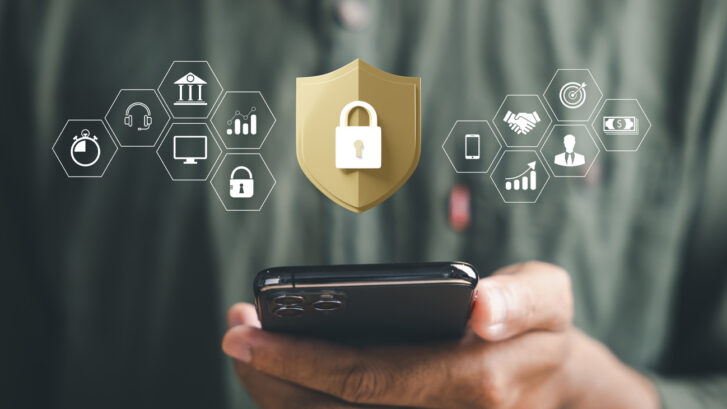Protecting Yourself from Password Change Scam Calls
In the digital age, where online accounts and services are integral to our daily lives, safeguarding personal information is paramount. Unfortunately, cybercriminals are constantly devising new tactics to exploit unsuspecting individuals. One such tactic is the password change scam call or someone posing as a fraud department member from Venmo, PayPal, Microsoft or Amazon. This article will delve into the intricacies of these scam calls, how they operate, and most importantly, how you can protect yourself from falling victim to such schemes.
Understanding Password Change Scam Calls
Password change scam calls are fraudulent attempts by cybercriminals to trick individuals into revealing their personal information, particularly passwords. These scams often involve a phone call from someone posing as a representative from a trusted organization, such as a bank, tech company, or government agency. The caller claims that there has been suspicious activity on the individual’s account and that a password change is necessary to secure it.
How the Scam Works
- Initial Contact: The scam usually begins with an unsolicited phone call. The caller may use spoofing technology to make it appear as though the call is coming from a legitimate source.
- Urgency and Fear: The caller typically creates a sense of urgency, claiming that immediate action is required to prevent further harm or unauthorized access to the account.
- Request for Information: To “verify” the individual’s identity, the caller asks for personal information, such as the current password, social security number, or answers to security questions.
- Fake Security Measures: The scammer may instruct the individual to change their password immediately, providing a link or guiding them through the process, during which the scammer captures the new password.
- Exploitation: Once the scammer has the necessary information, they can access the individual’s account, steal personal data, or commit financial fraud.
Recognizing the Signs of a Password Change Scam Call
Being able to identify the red flags of a scam call is crucial for protecting yourself. Here are some common indicators:
Unsolicited Contact
Legitimate organizations typically do not initiate contact out of the blue to request personal information. If you receive an unexpected call claiming to be from a trusted entity, be skeptical.
Urgent Language
Scammers often use urgent language to pressure you into making hasty decisions. They may threaten account closure, financial loss, or legal action if you do not comply immediately.
Requests for Personal Information
No reputable organization will ask for sensitive information such as passwords, social security numbers, or banking details over the phone. Be wary of any caller requesting this information.
Caller ID Spoofing
Scammers can manipulate caller ID to make it appear as though the call is coming from a legitimate source. Do not trust the caller ID alone as a verification method.
Steps to Protect Yourself
Protecting yourself from password change scam calls requires a combination of awareness and proactive measures. Here are some steps you can take:
Verify the Caller
If you receive a suspicious call, do not provide any personal information. Instead, hang up and contact the organization directly using a known, trusted phone number to verify the legitimacy of the call.
Use Strong, Unique Passwords
Ensure that your passwords are strong and unique for each of your accounts. This reduces the risk of multiple accounts being compromised if one password is stolen.
Enable Two-Factor Authentication (2FA)
Two-factor authentication adds an extra layer of security by requiring a second form of verification in addition to your password. This can significantly reduce the likelihood of unauthorized access.
Monitor Your Accounts
Regularly monitor your accounts for any signs of suspicious activity. Early detection can help you mitigate potential damage.
Educate Yourself and Others
Stay informed about common scam tactics and share this knowledge with friends and family. Awareness is a powerful tool in preventing scams.
Find out how the scammers got your number
See where your phone number, address, or other personal info is exposed – in seconds. Remove your personal information from data broker sites, reducing the likelihood of you falling victim to fraud, so you can take control of your privacy.
See where your phone number, address, or other info is exposed – in seconds.
🔒 Your info will remain private and secure.
The Role of Technology in Protecting Against Scams
Advancements in technology offer additional safeguards against scam calls. Services like YouMail provide robust protection features that can help you stay safe.
YouMail’s Features
YouMail offers a range of services designed to protect users from scam calls, including:
- Robocall Blocking: Automatically blocks known scam numbers and prevents them from reaching you.
- Smart Call Filtering: Identifies and filters suspicious calls, allowing legitimate ones to come through.
- Visual Voicemail: Provides a visual interface for managing voicemails, making it easier to identify and ignore scam messages.
Benefits of Using YouMail
Using YouMail can significantly enhance your protection against scam calls. Some key benefits include:
- Peace of Mind: Knowing that advanced technology is monitoring and blocking scam calls provides peace of mind.
- Increased Productivity: By reducing the number of scam calls you receive, you can focus on more important tasks without interruptions.
- Enhanced Privacy: YouMail’s robust security measures help safeguard your personal information from cybercriminals.
Conclusion
Password change scam calls are a growing threat in the digital landscape, but with vigilance and the right protective measures, you can safeguard your personal information. Always be cautious of unsolicited calls requesting personal information, use strong and unique passwords, enable two-factor authentication, and consider using advanced services like YouMail to block and filter scam calls. By taking these steps, you can protect yourself from falling victim to password change scams and ensure your online security.
For more information on how YouMail can help protect you from scam calls, visit YouMail. Stay safe and stay informed!





